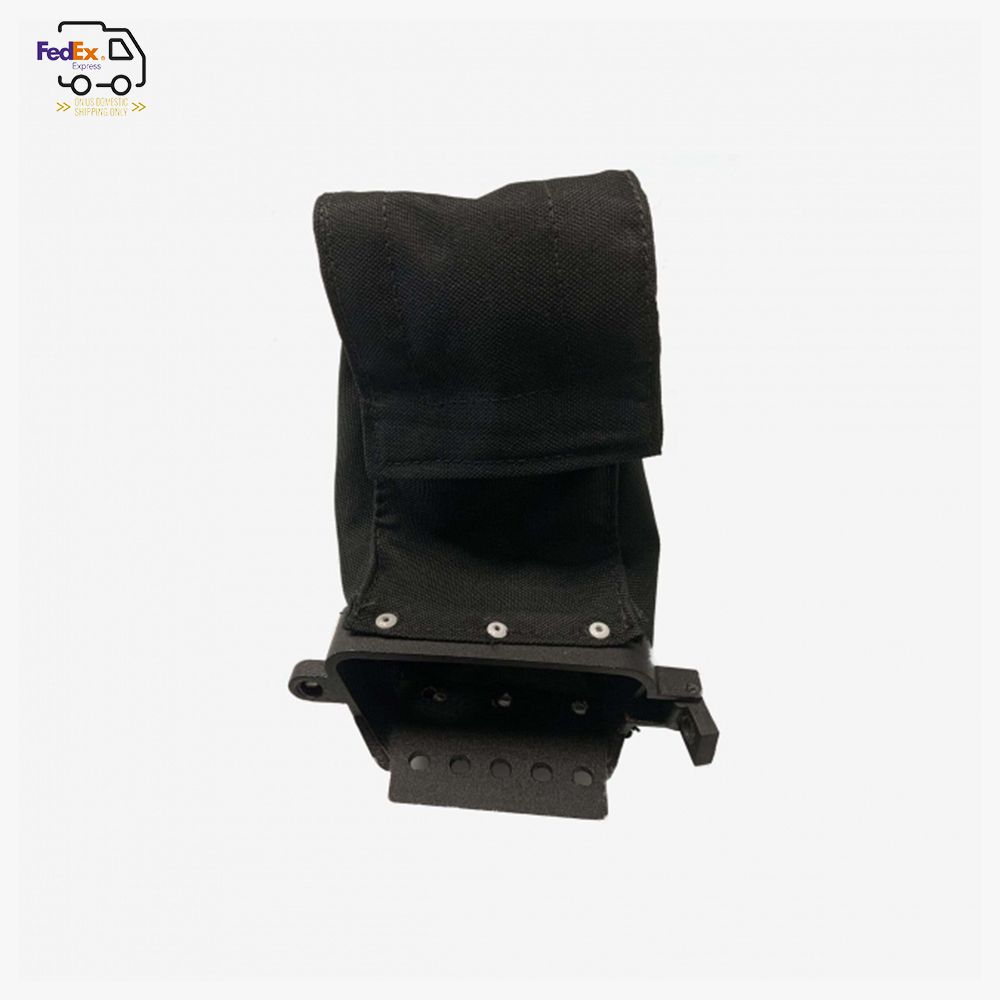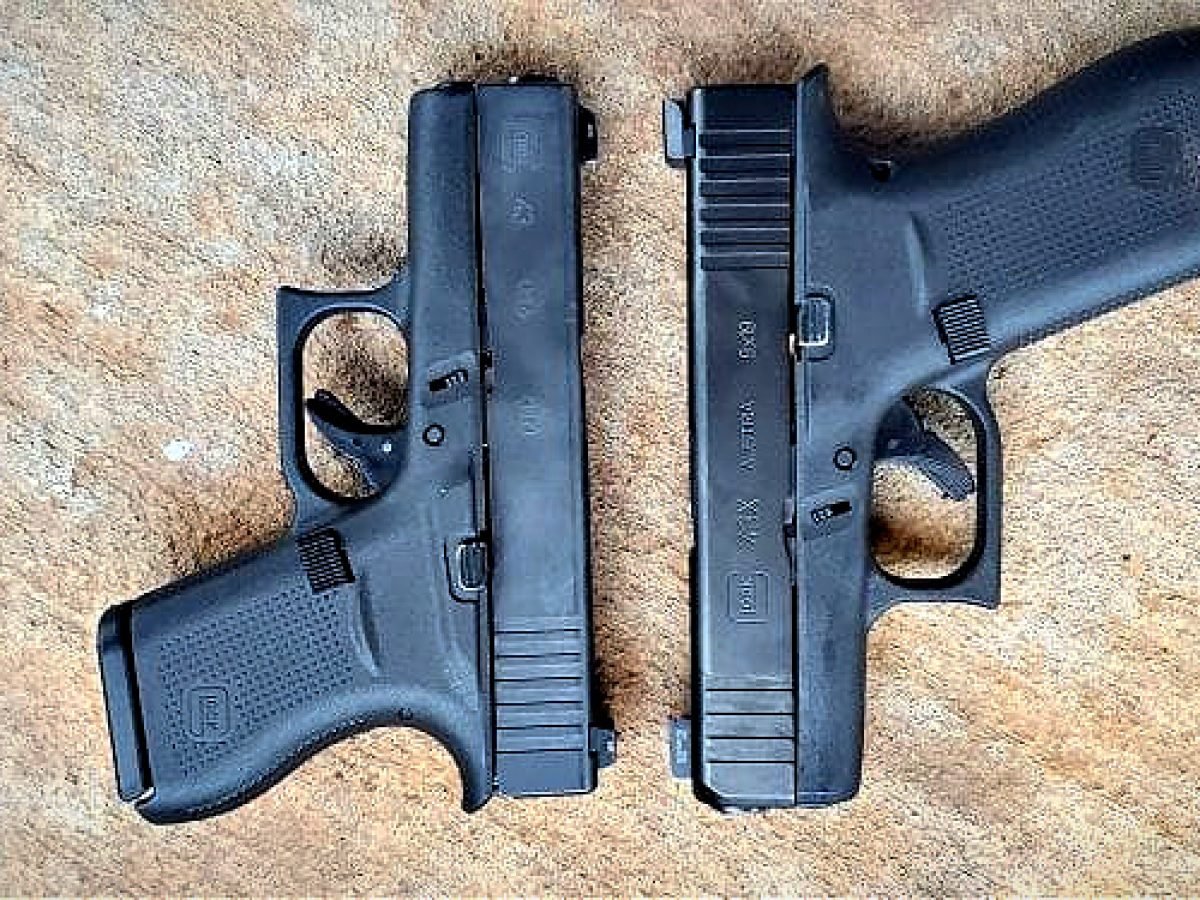Glock 17 Serial Number - A very common question for new Glock buyers is "What generation is my Glock?" Prior to the release of the 4th generation, Glock no longer officially recognized model numbers, which contributed to the perception that "a Glock is a Glock is a Glock - they're all the same." But early collectors noticed the differences and settled on three main iterations or "generations" to informally classify them. The nomenclature was so common that Glock followed suit with the Gen 4 release in 2008, and their promotional literature now highlights earlier Gens in some places.
The photos below will help you determine exactly which generation your Glock belongs to, but remember that there are many similarities because the models have changed gradually. Also, because of the handgun restrictions in California, 3rd generation guns are still being made, so you can have a 5th generation gun that is older than the 3rd generation! The notes on the pictures identify the main features that are consistent throughout the generation, but minor changes to the characters and internals can be found at different time intervals and sometimes back and forth - within a single Gen. Thus, strict breaks between generations indicate revision of only important frames, many parts may be replaced over two or more periods, but some changes last only a short time within a generation.
Glock 17 Serial Number

The 1st generation was one of constant change. Although the initial design is reliable, it is still under development. One consistent feature is the grip structure that wraps around the entire handlebar (no front or rear tires checked). It has a softer feel than later generations and is considered "rock texture" by collectors. The early rifles had a thin stainless steel barrel, parker coating was early (not later than the AD prefix) and the barrel wall thickness was not later than the N prefix. There are also various changes to the magazine, case and small internal parts. All rifles will have Austrian proof marks, but not consistent placement or number of dots. Many early (pre-US) and European market rifles do not have a serial number on the frame. Many early rifles were equipped with sights called "Weak Points" because of their fragility. The standard (stationary) sights are also dated, but the target version will have a higher level. All frames had a crescent magwell relief on the bottom of the front tires, except for a few number 19s.
New Glock 19 Gen 5 With Consecutive Serial Numbers (pending Sale)
Gen 2 is what many new collectors or even uninformed dealers call "Gen 1". The confusion stems from two factors: 1. Generation 1 is extremely rare and most casual observers may not have seen it. 2. Many models were introduced in the 2nd generation line, and some consider them "1st generation" because they are the first edition of that model. To clarify, if you own a Model 20 or higher, you have a Gen 2 Glock, even if it is the first version of the gun. The only obvious difference between the 1 and 2 for the 17-19 models is the addition of a checkered color to the front and rear tires, as well as a change in the texture of the side panels (deeper than the 1st generation). Gen 2 also saw the introduction of 5 additional calibers, and all non-.380/9mm rifles were equipped with a second locking block to prevent frame cracking from heavier recoil. It should be noted that the number of pins does not indicate generation, as many believe. 9mm frames have only two pins from generation 1 to generation 3, all other calibers have 3 pins. All full-size frames carry magwell relief on the bottom of the front tire.
By the late 1990s, Glock had become a dominant force in the American gun market, and other manufacturers were scrambling to copy the design. This led to some pressure to try to stay ahead of the crowd and "innovate" the Glock design. Gen 3 changes actually began in 1995 with the release of subcompact models. It was believed that the grip would be too small for most people to hold, so toe grooves were built into the front tire to increase and prevent purchase. rotation due to recoil. This began a 3-year transition period, until the full facelift reached all models in '98. Some large frame transition models are quite rare (especially in ported variations) - see https:///transitional/ for more information. The Gen 3 will have finger grooves on the front strap, thumb grooves on the top of the grip, and an additional rail built into the dust cover. As mentioned above, ONLY for 9mm calibers you will still find early 3rd generation 2-pin designs. Frames were simplified to all 3-pin in the early 2000s.
When the 4th generation appeared, Glock became ubiquitous for the "pistol", but again faced competition with innovative designs. One fad that caught the fancy of consumers was having interchangeable backstraps to better fit the handle to different sized hands. Glock initially experimented with narrower grips on the Gen 3 SF models (they were only available in .45 and 10mm calibers). A modular rear strap system brought SF proportions to all frames with two options for larger size and even beaver adapter inserts. The internals were redesigned from the ground up and were actually built with the .40S&W reverse profile in mind and then shortened to 9mm (Gen 1-3 reverse design here). This should continue the legendary reliability of the 9s and make the .40 models even more durable. The grip structure has also been changed to a more aggressive pattern on the side panels – again the first to be tried on the short range of the last Gen 3 rifles with the “RTF2” texture. RTF2s are technically Gen 3, possibly Gen 3.5, and were only produced from 2009 to 2011 (special edition ban period) - see image at bottom of this page.
The first generation 5 models actually preceded the release of the new subcompact smartline models 42 and 43. These models started out as radical redesigns with all new internal components to fit the smaller dimensions, and the FBI played a role in these changes being implemented. . With their demands on the M models, they went bigger guns. The 19X, 42, 43, 43X, 44, 45 and 48 technically do not have a Gen 5 mark on the slide, but are never closely matched with other Gen 5 rifles. The 17s and 19s were officially released as Gen 5s in 2017, and other 9mm and .40 S&W offerings followed, but so far no .357 Sig, 10mm, or .45 ACP offerings have been produced. Major changes include a "shot" barrel, full dual controls, flared magwell, and removal of front strap toe.
Lipsey's Announces Vickers Tactical Signature Glock 17&19
There are (at least) two other designs that are really beyond generational differences, or different enough to be hard to tell from the talk above: 1. RTF2 third generation and 2. FBI M series.
RTF2 is short for "rough texture framework, version two". The first version was only built as a prototype and never released, but at least one is on display at the Cody Firearms Museum. The designers went back to the second version, and new shapes were created to incorporate this grip texture into the standard 3rd generation design. All internal parts are the same, so the only difference is the structure of the handle. As you can see in the exploded photo, the entire handle is covered in little pyramids - and let me tell you, they are sharp! This gun sticks to your hand even when wet. Glock sold it primarily to the police from 2009 to 2011, but the design is a clear step between the third and fourth generation guns. The pyramid concept was carried over, but with larger pyramids, as RTF2s were prone to wear and tear through clothing. See https:///rtf2g/ for more images.
And finally, we have to talk about the FBI's M-series pistol. The 17M and 19M actually preceded and probably inspired the Gen 5 rifles. They were built to specifications requested by the FBI as a new department service weapon and incorporated some design changes from the mini 42/43 models as well as some new ideas. These were the first Glocks to have two controls and modifications to the gun designed to improve accuracy. On the outside, however, the M rifle looks and feels almost exactly like the Gen 5 - the main differences are internal, which is why most collectors consider them part of the Gen 5 family. For the right person, the "M" added to the model designation makes a big difference in the price they are willing to pay.

Glock serial number, glock 22 serial number, glock 17 serial number lookup, glock 21 serial number, glock 17 serial number list, glock serial number dates, glock serial number lookup, glock serial number location, glock serial number list, glock serial number search, glock serial number check, glock 17 gen 1 serial numbers







